Uganda is one of those countries where the love of adventure meets the road of pleasure. It is a pearl that contains the golden reflections of diversity and exclusivity. The country teems with thousands of wildlife species and spectacular landscapes that are uniquely distributed across the different regions within it. Such regions act as the hallmarks that redefine the meaning of happiness to every traveler. Visit the central region and you will see wonderful people and culture preserved for hundreds of years. Then take a drive to the west and you will see the definitions of perfection resting within the green of old (forests) and the extensive savannah plains. Try the east and an array of wildlife and scenery will remind you of the classical age music composition- Oh fortuna! Then maximize the excitement with the Northern terrain where expectation meets awesome experiences that would surely know your name! In all these, the Antelopes in Uganda form part of the highlights.

Uganda is known as the pearl of Africa. This term, although coined over 100 years ago still resonates with the actual reality that is in the country today. This is explained by the 18753 species of fauna and flora that are hosted within the 241,037 km² of land area that the country possesses. Such species include the phenomenal herds and beauties of antelopes that inhabit the country’s wildlands and wildlife-dotted savannahs. Examples of such savannahs include: Murchison falls National park, Queen Elizabeth National Park, Lake Mburo National Park and Kidepo Valley National Park. There are however some forest national parks that also contain the gems.
These include Bwindi Impenetrable National Park, Semuliki National Park and Kibale National Park. To your surprise, antelopes can also be spotted in mountainous national parks. These include Mt. Elgon National Park and Rwenzori mountains National Park. Antelopes are so numerous and are the most common on any savannah safari in Uganda. They can be observed in 9 out of 10 national parks and thus possess one of the greatest range distributions that land animals usually have. Whether you go into the forest, you have chances of seeing them. As you are climbing the mountains, they wait in hiding for you to pass and then feed on some the vegetation you will encounter on the way. And then as you drive through the savannah, you will witness their breeding, feeding and ecological behavior.
Antelopes in Uganda within National Parks.
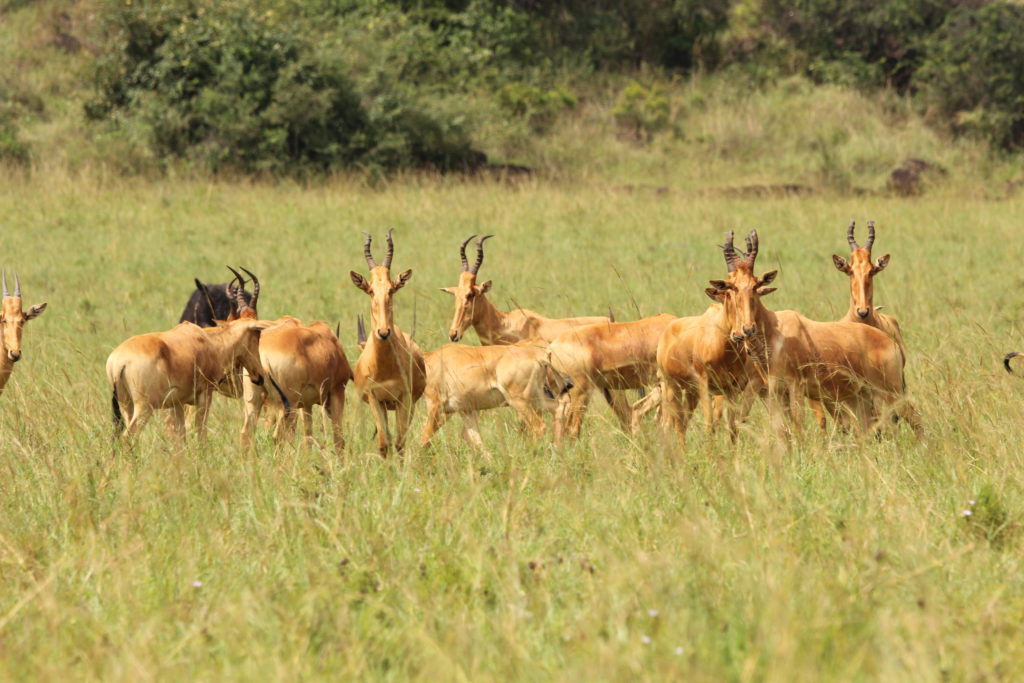
Antelopes are some of the most interesting animals to encounter on any African safari. They form a broad and significant number in their composition in both Uganda and Africa.
The term antelope represents a great number of individual species that one can come across on an African safari. Uganda hosts a phenomenal 29 species of antelope, including the eland- the world’s largest antelope. Antelopes are so important to Uganda that the country’s national emblem contains one of them, the Uganda kob. Species of antelopes are differentiated from each other by their characteristic appearance that changes either by color, fur, patches, size and shape.
Antelope classification
There are 91 antelope species, most of which are native to Africa’s wildlands and occur in about 30 genera. According to Wikipedia, the classification of tribes or subfamilies within Bovidae is still a matter of debate, with several alternative systems proposed.
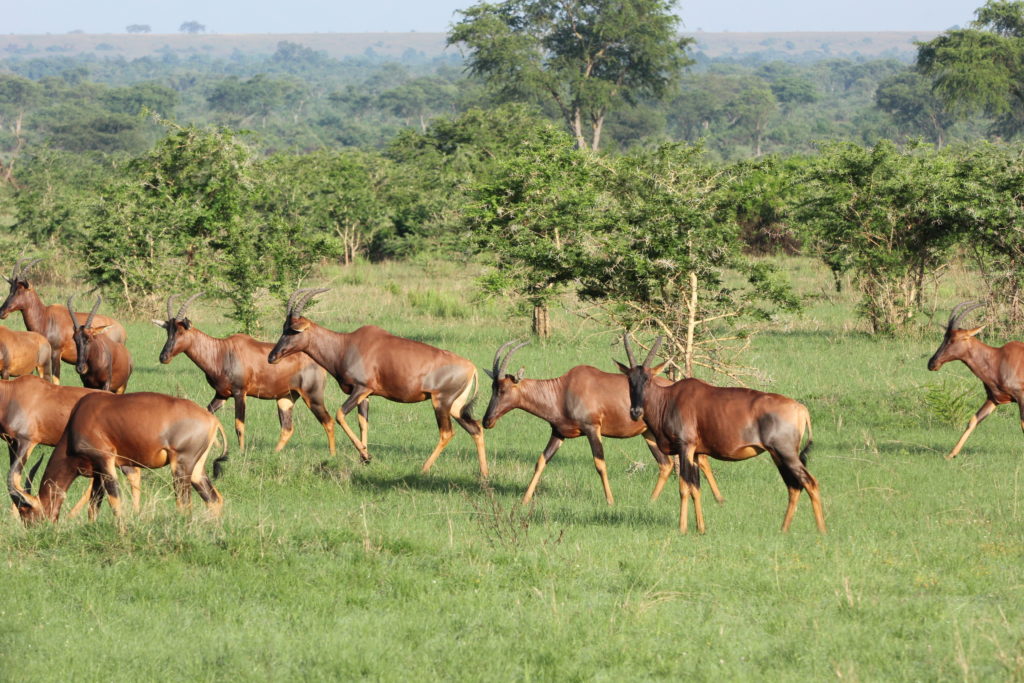
Antelopes are not a cladistic or taxonomically defined group. The term is used to describe all members of the family Bovidae that do not fall under the category of sheep, cattle, or goats. Usually, all species of the Alcelaphinae, Antilopinae, Hippotraginae, Reduncinae, Cephalophinae, many Bovinae, the grey rhebok, and the impala are called antelope. About 25 species are rated by the IUCN as endangered, such as the dama gazelle and mountain nyala. A number of subspecies are also endangered, including the giant sable antelope and the mhorr gazelle. The main causes for concern for these species are habitat loss, competition with cattle for grazing, and trophy hunting.
Scientific classification.
| Kingdom: | Animalia |
| Phylum: | Chordata |
| Class: | Mammalia |
| Order: | Artiodactyla |
| Infraorder: | Pecora |
| Family: | Bovidae |
| Groups included | |
| Aepycerotinae Antilopinae Cephalophinae Hippotraginae Pantholopinae Peleinae Reduncinae Tragelaphini | |
| Cladistically included but traditionally excluded taxa | |
| AlcelaphinaeBoviniCaprinae |
Antelope in Uganda distribution within specific National Parks
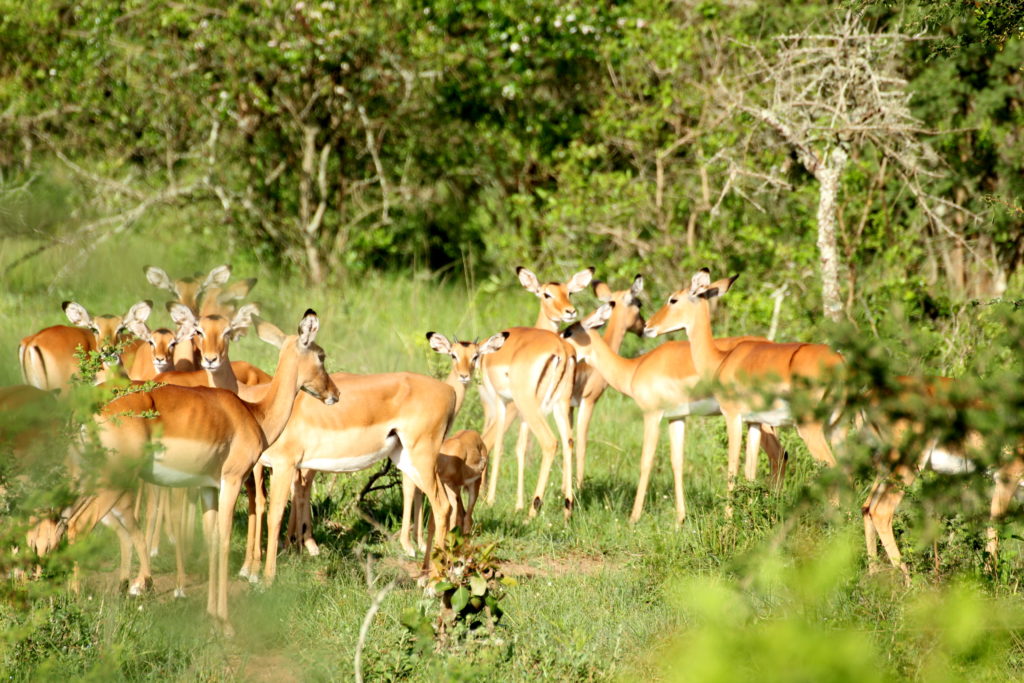
The 29 species of antelope that Uganda has include examples like elands, the greater kudu, Jackson’s hartebeest, waterbuck, sitatunga, Grant’s gazelle and the Uganda kob among others.
In Murchison falls National Park, there are numerous species of antelopes. These include the Uganda kobs, the oribi, the defassa waterbuck, the grey duiker, the bushbuck and the Jackson’s hartebeest (which is endemic to the country) among others.
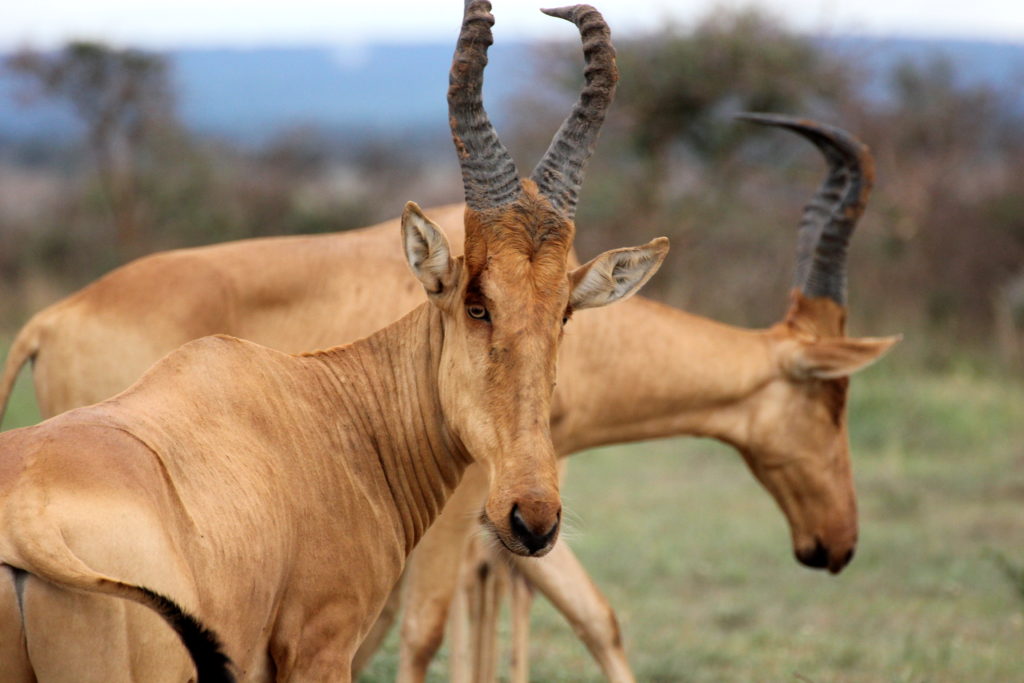
Semuliki National park has 53 mammals, 27 of which are large mammals. Some of the antelopes here include the pygmy antelope which is endemic to the area. Other antelopes include: the Uganda Kob, waterbuck, bush buck and 9 species of duikers among others. The duikers in the area include the red duiker, blue duiker and bay duiker among others. Semuliki is also said to possess the world’s largest forest antelope that was captured on a camera trap. This was the lowland or western bongo. This mammal can weigh up to 800 pounds.
Queen Elizabeth National park is also another area that is home to numerous species of antelopes. These include: the Uganda kob, topi, sitatunga, waterbuck, reedbuck, duiker and bushbuck among others.

Kidepo valley national park is another place to see antelopes. The park has an estimated 12 species of antelope. These include the oribi, eland, Uganda kob, klipsringer, jackson’s hartebeest, greater and lesser kudu, mountain reedbuck, Guenther’s dik-dik, roan antelope, bright gazelle and the beisa oryx among others.
Lake Mburo national park also boosts as an area that hosts antelopes. The park is importantly the only place where impalas can be found in the country. Other animals in the park include: the Burchell’s zebra, oribi, Defassa waterbuck, reedbuck, topis, klipspringer, sitatunga, bushbucks and duikers among others.
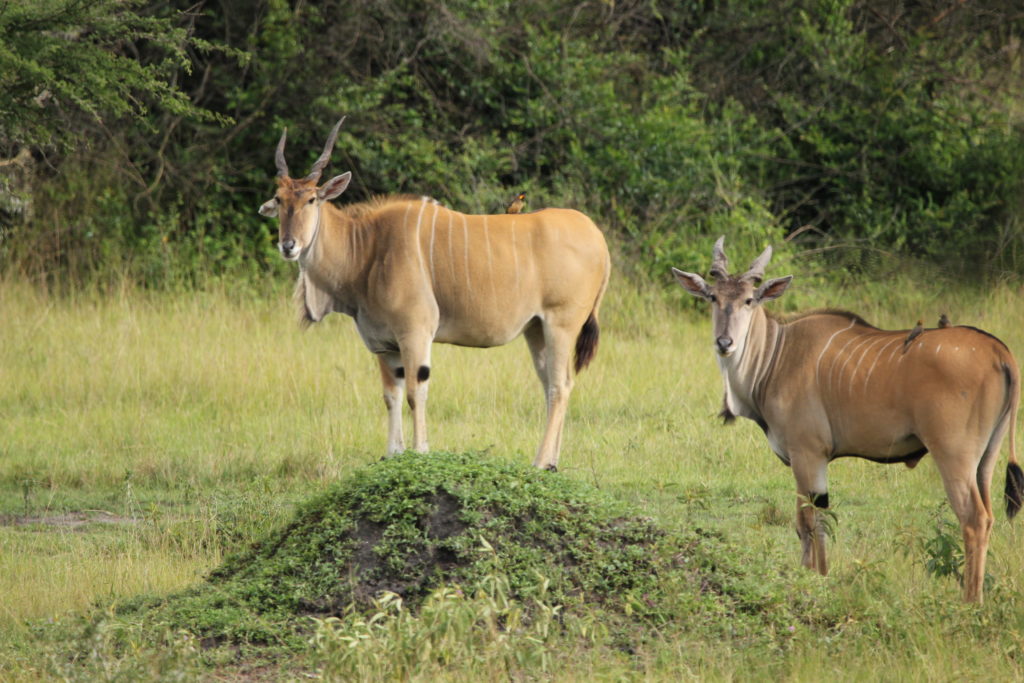
Mt. Elgon national park is known for small antelopes like the duiker, the oribi, bushbuck and the waterbuck among others. Among its 70 mammal species, Rwenzori Mountain National Park also has similar antelopes like the harnessed bushbuck, the red forest duiker and the yellow-backed duiker among others. Although these are present, the dense forest makes them hard to see.
Another area that is known to inhabit antelopes in Uganda is Kibale National Park. The park is home to 5 species of antelope which form part of the 60 mammal species found in the park. These include the blue, peter and red duikers, bushbucks and sitatungas.
Bwindi Impenetrable National Park is also known to host some small six species of antelopes as part of the 120 mammal species found in the park. These include: the sitatunga, bushbuck and five duiker species.
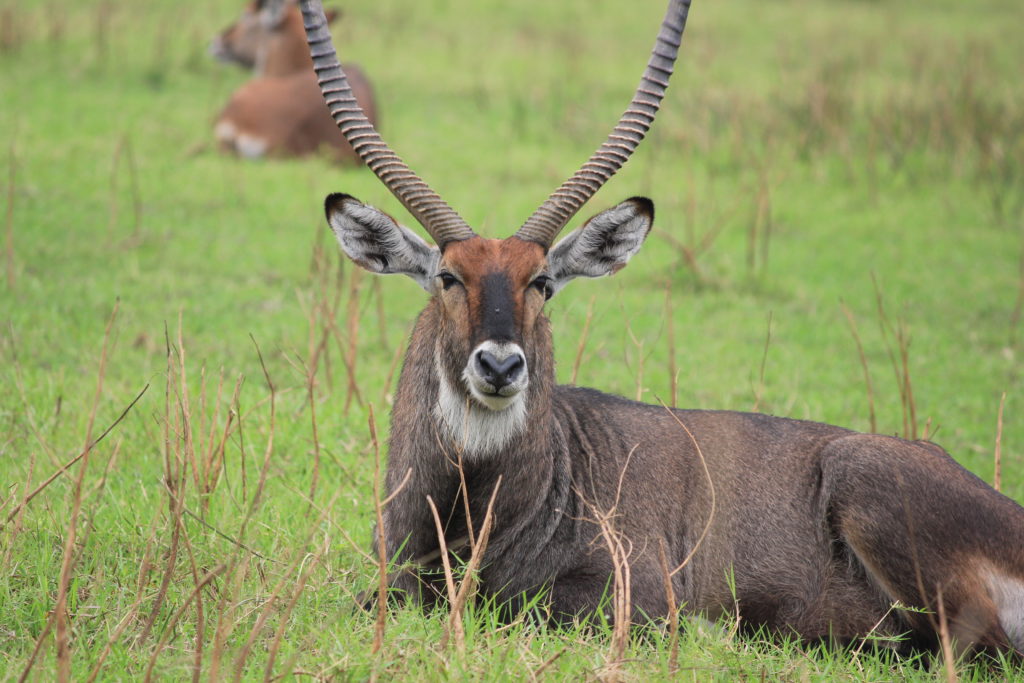
Reproductive behavior of the antelopes.
Antelopes are usually classified as a result of their reproductive behavior. Small antelopes, such as dik-diks, tend to be monogamous. They inhabit forested environments with few resources. Males are unable to monopolize more than one female due to the sparse distribution. Larger forest species often form very small herds of two to four females and one male.

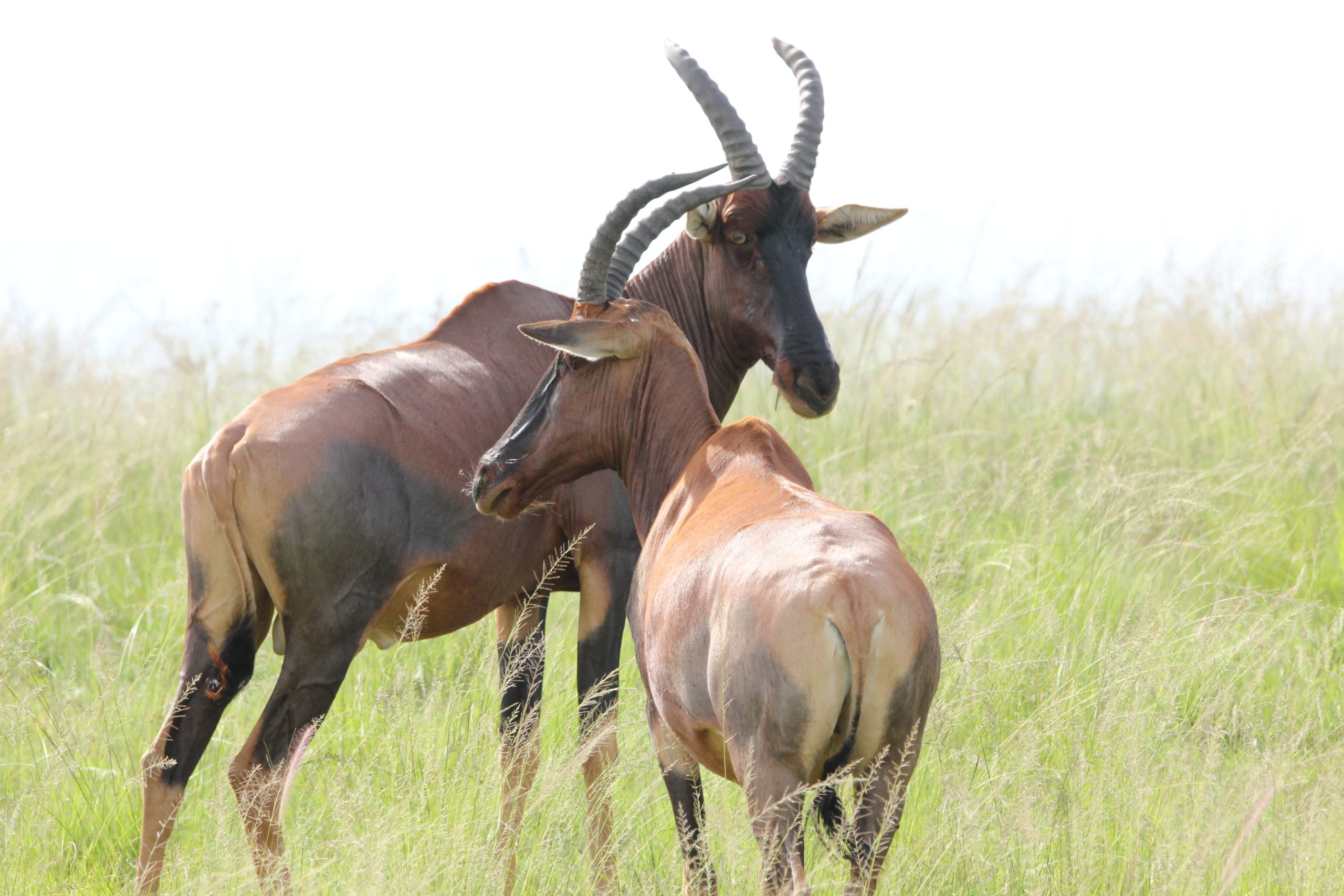
This is a remarkable article by the way. I am going to go ahead and save this article for my sister to check out later on tomorrow. Keep up the superior work.
Exceptional information, about antelopes Uganda is a home
….thanks for this
#visitthepearl
#ugandatourism